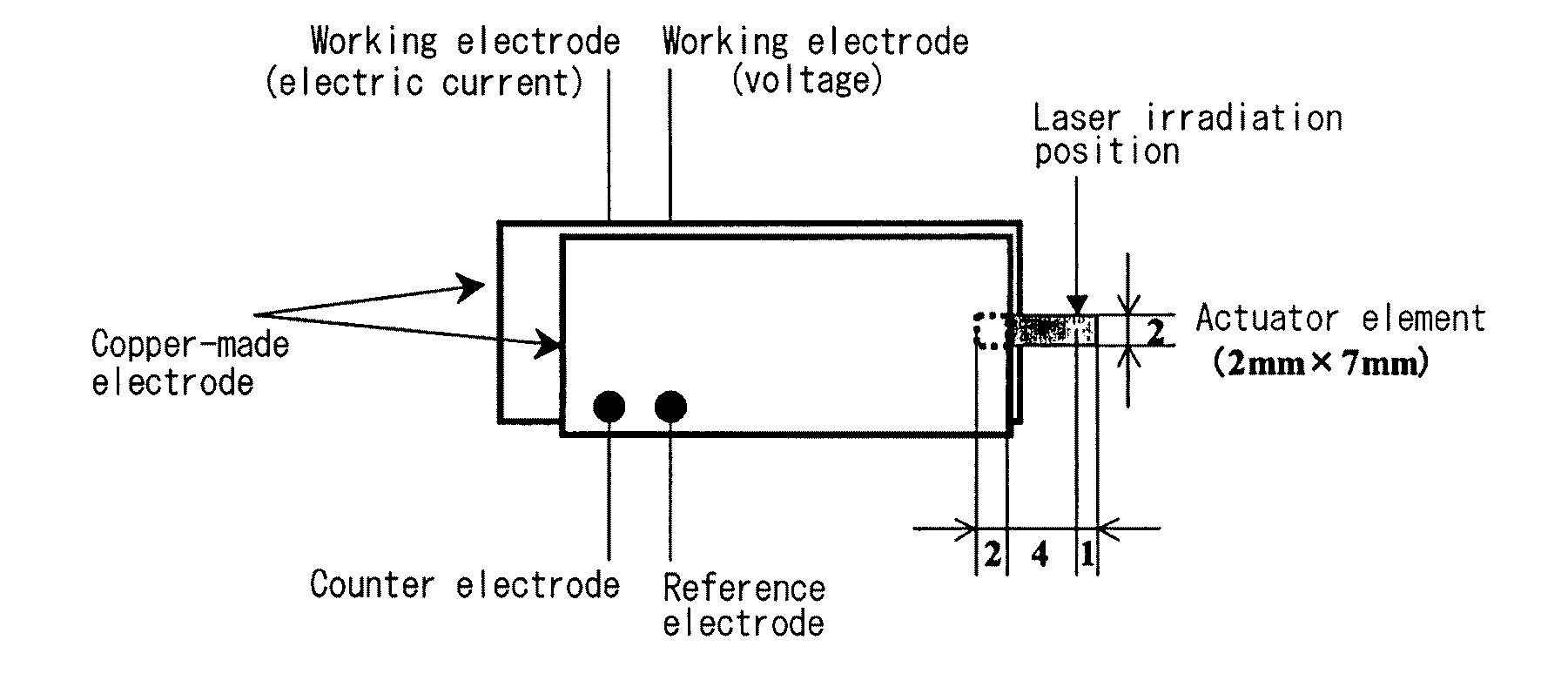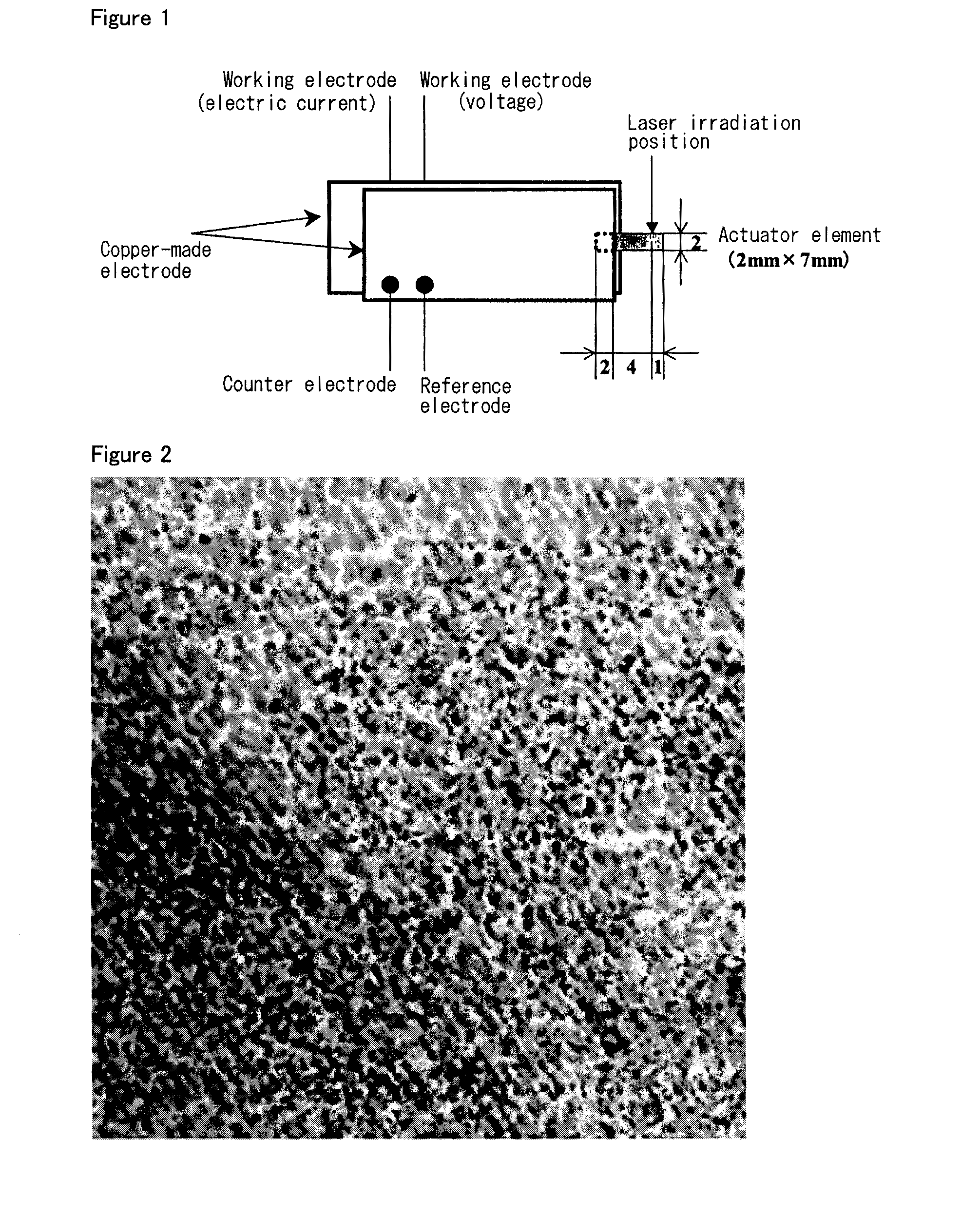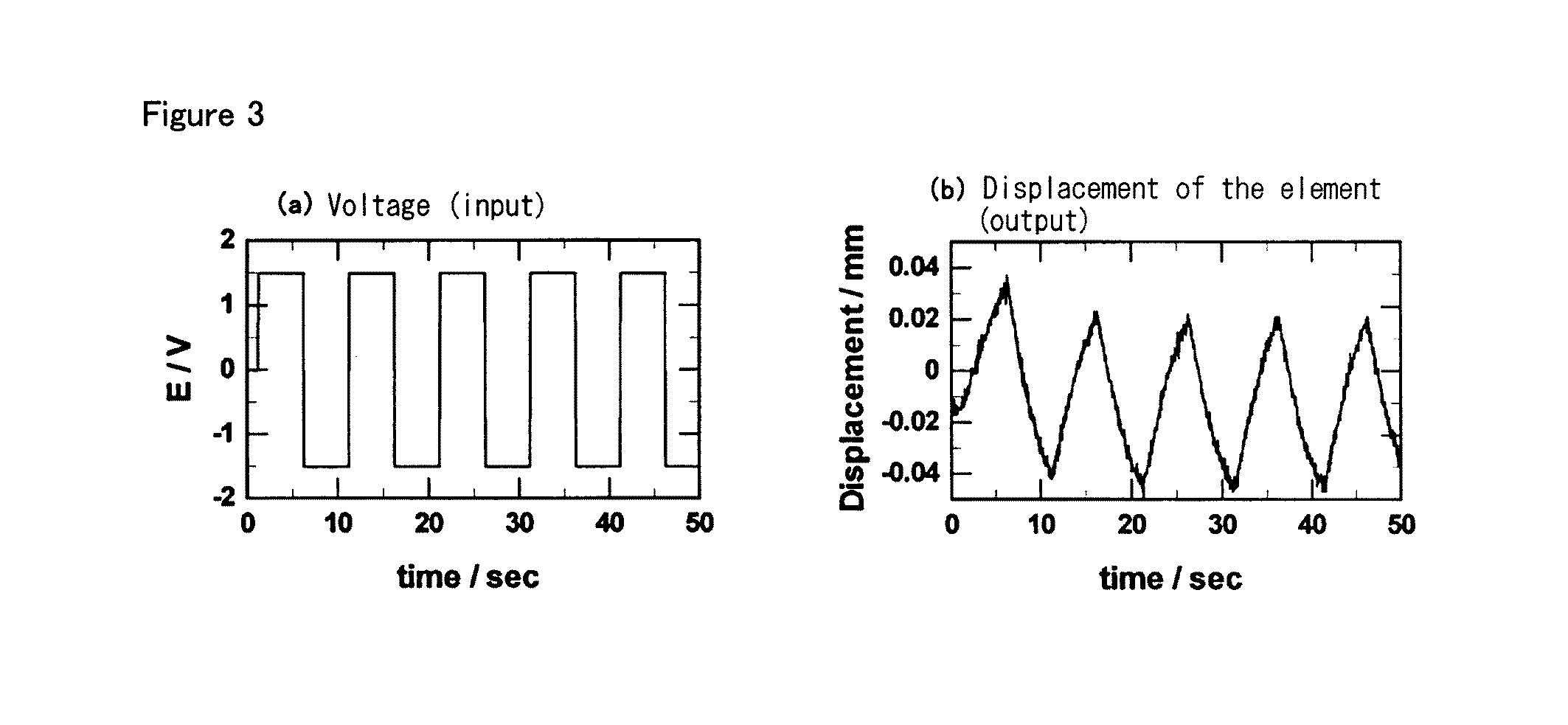Polymer electrolyte, electrochemical device, and actuator element
a technology of electrochemical devices and actuator elements, applied in capacitor electrolytes/absorbents, non-aqueous electrolytes, conductive materials, etc., to achieve excellent ion conductivity, excellent fast response properties, and stability and freedom of shap
- Summary
- Abstract
- Description
- Claims
- Application Information
AI Technical Summary
Benefits of technology
Problems solved by technology
Method used
Image
Examples
referential example 1
Preparation of polystyrene-b-polymethyl methacrylate-b-polystyrene
[0149](1) A magnetic stirrer was put in 1 L round-bottomed flask wherein inside moisture had been removed completely, and a three way cock was attached. In a glove box of an argon atmosphere, 370 mg (8.73 mmol) of lithium chloride was put in the flask. The flask was taken out from the glove box, and 560 mL of tetrahydrofuran was put in the flask. This flask was immersed in a dry ice / methanol bath to cool the contents to −78° C., 2 mL of a sec-butyllithium solution (2.6 mmol as sec-butyllithium) was added dropwise. Then, 33.9 mL of styrene (297 mmol) was added dropwise gradually to this solution and polymerization was made at −78° C. for 1 hour.
[0150](2) Then, 1.54 mL of 1,1-diphenylethylene (8.72 mmol) was added dropwise thereto. When a very little amount of the polymerization solution was taken out using a syringe, and subjected to GPC measurement, the result was Mn=18,800 and Mw / Mn=1.15. Initiator efficiency determi...
referential example 2
Preparation of polystyrene-b-polymethyl acrylate-b-polystyrene
[0155](1) A magnetic stirrer, 7.17 g of copper (I) bromide (50 mmol) and 3.6 g of diethyl meso-2,5-dibromoadipate (10 mmol) were put in a 2 L three-necked flask, and then, the air inside the flask was sufficiently replaced with dry nitrogen. Then, 955 mL of acetonitrile and 785 mL of methyl acrylate were added, and the mixture was stirred at room temperature for 30 minutes. Then, the mixture was warmed to 50° C., and 8.33 mL of a solution of HMTETA in acetonitrile (concentration 0.3 mol / L)(16.7 mmol as HMTETA) separately prepared was added to initiate polymerization. 2 hours after initiation of the polymerization, 2.08 mL of a solution of HMTETA in acetonitrile (concentration 0.3 mol / L)(0.62 mmol as HMTETA) was added, and polymerization was continued for further 5 hours.
[0156](2) 5 hours later, the flask was dipped in ice water to cool the polymerization solution, resulting in termination of polymerization. At the termina...
referential example 3
Preparation of polystyrene-b-polyethyl acrylate-b-polystyrene
[0162]The same operations as in Referential example 2 were made except that ethyl acrylate was used in place of methyl acrylate and part of stoichiometric ratios was changed, whereby a polystyrene-b-polyethyl acrylate-b-polystyrene (hereinafter, sometimes referred to as B-11). On the polymer obtained, Mn was 167,200, Mw / Mn was 1.81, and, in the block copolymer, the PSt content was 69% by mass and the polyethyl acrylate (PEA) content was 31% by mass
PUM
| Property | Measurement | Unit |
|---|---|---|
| Temperature | aaaaa | aaaaa |
| Temperature | aaaaa | aaaaa |
| Volume | aaaaa | aaaaa |
Abstract
Description
Claims
Application Information
 Login to View More
Login to View More - R&D
- Intellectual Property
- Life Sciences
- Materials
- Tech Scout
- Unparalleled Data Quality
- Higher Quality Content
- 60% Fewer Hallucinations
Browse by: Latest US Patents, China's latest patents, Technical Efficacy Thesaurus, Application Domain, Technology Topic, Popular Technical Reports.
© 2025 PatSnap. All rights reserved.Legal|Privacy policy|Modern Slavery Act Transparency Statement|Sitemap|About US| Contact US: help@patsnap.com



